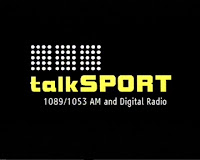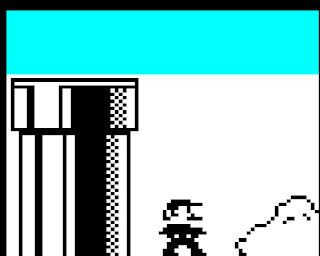Monday, 28 January 2008
DeuxPix
Another video in the same vein as the previous Larsen Feedback piece. By artist "Rocketrobos" (Toban Nicols) from YouTube. It's pretty cool how it's been done but a bit more technical than I could manage. Very similar to my proposed glitch film for which I am still collecting footage.
Tuesday, 22 January 2008
Larsen Feedback
This is a composition by Maxime Merion involving a slightly psychedelic series of images, taken directly off a television screen. It's a little bit like what I would like to achieve and is reminiscent of Telegiffer in some ways. It is, however, a bit more considered and worked on.
Maniax Memori weblog
I like how this piece seems to have originated from the feedback generated from a microphone. Pretty cool.
Teletext is dead.
Maniax Memori weblog
I like how this piece seems to have originated from the feedback generated from a microphone. Pretty cool.
Teletext is dead.
Monday, 21 January 2008
Misc. links
 Video cards were originally much the same resolution as teletext. However whilst Video cards advanced teletext's format remained the same.
Video cards were originally much the same resolution as teletext. However whilst Video cards advanced teletext's format remained the same.
- Windows 3.0, released 1990, utilised a graphics card with over 1600 colours.
- An article from 1987 about teletext in the US. Shows how behind the times the American continent was with teletext: televisions with appropriate encoders were not widely available in 1987.
- It's always worth a look at the Lektrolab Flickr stream.
- About the first video game -'Spacewar' at inventors.com
- Windows 95 was a pretty popular Operating System in its time. It helped Internet Explorer dominate the web browser market for ages. WorldWideWeb, meanwhile, was the first web browser and HTML editor.
- An important landmark in the history of the BBC and indeed television - the Queen's coronation. 22 million people watched.
Sunday, 20 January 2008
Teletext remote control icons
Remote controls modified for teletext control have their own selection of icons that correspond to subtitles, index page etc. This could be a useful set of visual metaphors for the website.
The impetus for a more complex type of television remote control came in the late 1970s with the development of the Ceefax teletext service by the BBC. Most commercial remote controls at that time had a limited number of functions, sometimes as few as three: next channel, previous channel, and volume/off. This type of control did not meet the needs of teletext sets where pages were identified with three-digit numbers. A remote control to select teletext pages would need buttons for each number from zero to nine, as well as other control functions, such as switching from text to picture, and the normal television controls of volume, station, brightness, colour intensity and so on. Early teletext sets used wired remote controls to select pages but the continuous use of the remote control required for teletext quickly indicated the need for a wireless device. So BBC engineers began talks with one or two television manufacturers which led to early prototypes in around 1977-78 that could control a much larger number of functions.
-- Wikipedia entry on remote control
BBC interactive streaming/digital layouts
Every now and again, the BBC don't have enough channels to screen an event such as the snooker or football highlights. These are instead accessible via the 'red button', or through the BBCi interactive service:




Note that the familiar colour coded fastext keys have been kept for this new version of teletext. Essentially there isn't all that much content so it isn't really a true teletext service - only details on what's currently being streamed and what's coming up on the stream.
I hope that, by looking at some of these existing 'new' digital teletext layouts I can get inspiration for my website layout. Perhaps I can meld together elements of these different teletext services to create a new, web-friendly version. I kind of like the graphics on the BBC football:

I hope that, by looking at some of these existing 'new' digital teletext layouts I can get inspiration for my website layout. Perhaps I can meld together elements of these different teletext services to create a new, web-friendly version. I kind of like the graphics on the BBC football:

Interactive TV - subtitles
I suppose they are encoded differently on every digital set top box but this is what the digital subtitles look like on mine:
Saturday, 19 January 2008
Weather Watch - part three
Digital teletext.
The maps have changed quite a bit since 2002 but have retained the temperature forecasts. Note than the Isles of Scilly are now included!
The maps have changed quite a bit since 2002 but have retained the temperature forecasts. Note than the Isles of Scilly are now included!
Digital teletext - audio
Digital set top boxes allow for listening to radio via television. Aside from being 'crystal clear' audio quality, these have their own accompanying text services. Most are pretty limited and only exist to fill blank space (such as Talksport's, below left), but others such as the one for BBC Radio 5 Live (above) are more extensive. In fact, the latter is linked with the BBC's interactive service to provide news and programme details.
Teletext art - Flickr photos
I've uploaded some high quality versions of the teletext art I have created up until now to Flickr.
 My Teletext Art (flickr)
My Teletext Art (flickr)
 My Teletext Art (flickr)
My Teletext Art (flickr)Incidentally, I like the idea of playing on the Britishness of Teletext. Whereas most British things fail miserably, Teletext held strong for 35 years and it will be a sad day when the analogue transmitters are turned off.
Friday, 18 January 2008
Font specifications
- There's a bit of a specifications guide from 1992 here.
- Mode Nine looks like a pretty true teletext font.
- A BBC Micro font.
TV glitching
Been recording some results of 'glitching' my digital set top box. The idea here would be to collect a selection of glitched screens and sounds to edit together in a short movie. Whereas previously analogue television would just lose reception or the picture become all snowy, digital television becomes all strange and deformed with a low reception signal. Well, it does on my box, anyway.
Teletext art
Using Photoshop and the Cebra Teletext Editor I have made some of my own teletext art. I'm getting used to the program now but not yet to the point where I could begin making some professional looking pages. Top two: Photoshop. Bottom three: CebraText.
Thursday, 17 January 2008
ASCII Space Invaders

It's just the same as the original but in ASCII.
ASCII Space Invaders
See also
Hmm. It seems there are a lot of these around the Internet, with no two versions being precisely the same.
Hmm. It seems there are a lot of these around the Internet, with no two versions being precisely the same.
Wednesday, 16 January 2008
More glitching
Some teletext glitch art by Paul Davis of Lektrolab and a piece by a user with an unprintable name at Flickr.
ASCII Art - links
 Canonical smileys list. Interesting how a combination of a few ascii characters can express an opinion or an emotion. Even though there are multiple meanings for each (for example, :-) can mean 'smiling' or 'user is an orator' amongst other things), there is a certain amount of shared knowledge amongst Internet users.
Canonical smileys list. Interesting how a combination of a few ascii characters can express an opinion or an emotion. Even though there are multiple meanings for each (for example, :-) can mean 'smiling' or 'user is an orator' amongst other things), there is a certain amount of shared knowledge amongst Internet users.
- The Wikipedia Emoticons entry mentions that certain smileys have been copyrighted in Finland (!)
- Japanese two byte emoticons are usually vertical rather than horizontal. For example "(;_ :)" means "feeling sad".
- An article on the smiley's 25th birthday:"The critics of emoticons maintain that it has destroyed the fabric of proper writing, believing a functioning literary mind should be able to express emotion without the use of a direct symbol explaining to the reader exactly how he or she should feel. But to answer these critics, is it really that serious of a debate? A simple :-) here or a :-( there is a simple way to avoid an unintentional row, and that's something everyone can :-) about." -- ITPRO
- A Tour of ASCII and ANSI art from the 80s and 90s.
Tuesday, 15 January 2008
Paul Slocum/Cory Arcangel
Paul Slocum's website
 I mentioned Paul Slocum in an earlier post when I wrote about his Atari Windows GUI. A lot of his work focuses on video game hacking, particularly through music. One particular piece, Combat (right), was actually exhibited at the 2004 Liverpool Biennial. It's another hacked cartridge in which the music is all glitched up:
I mentioned Paul Slocum in an earlier post when I wrote about his Atari Windows GUI. A lot of his work focuses on video game hacking, particularly through music. One particular piece, Combat (right), was actually exhibited at the 2004 Liverpool Biennial. It's another hacked cartridge in which the music is all glitched up:
Combat, 3 mins
I've never played the game before but in this version, the exisiting soundtrack is replaced by a house/garage/whatever funky soundtrack!
 Cory Arcangel's website
Cory Arcangel's website
...is fashionably unfashionable. Actually, I like the design better than most websites...
There's some interesting work on there, mostly conceptual but there's a long tutorial on how to recreate the 'clouds' piece, if you can get hold of a Nintendo.
Notice the great big chip pasted to the cart to modify the programming. It would have been much easier (but less fun I expect) to hack a ROM using computers... but that would probably be illegal, I suppose.
 I mentioned Paul Slocum in an earlier post when I wrote about his Atari Windows GUI. A lot of his work focuses on video game hacking, particularly through music. One particular piece, Combat (right), was actually exhibited at the 2004 Liverpool Biennial. It's another hacked cartridge in which the music is all glitched up:
I mentioned Paul Slocum in an earlier post when I wrote about his Atari Windows GUI. A lot of his work focuses on video game hacking, particularly through music. One particular piece, Combat (right), was actually exhibited at the 2004 Liverpool Biennial. It's another hacked cartridge in which the music is all glitched up:Combat, 3 mins
I've never played the game before but in this version, the exisiting soundtrack is replaced by a house/garage/whatever funky soundtrack!
 Cory Arcangel's website
Cory Arcangel's website...is fashionably unfashionable. Actually, I like the design better than most websites...
There's some interesting work on there, mostly conceptual but there's a long tutorial on how to recreate the 'clouds' piece, if you can get hold of a Nintendo.
Notice the great big chip pasted to the cart to modify the programming. It would have been much easier (but less fun I expect) to hack a ROM using computers... but that would probably be illegal, I suppose.
Glitch browser
 Glitch Browser
Glitch BrowserThis is a little computer application that corrupts any page you input to the address bar. It works in your browser like any other, except everything is all messed up. Auto glitching, kind of. The above image is a small screegrab from my Teletext album on Flickr. I used to get a lot of glitched images similar to these when I used floppy disks but sadly nobody uses them any more - probably for that reason.
Befix - glitch art
 "Pleasure is Error". For some reason humans (particularly us British) like seeing things go horribly wrong. Not in a mean way but kind of accepting failure.
"Pleasure is Error". For some reason humans (particularly us British) like seeing things go horribly wrong. Not in a mean way but kind of accepting failure.I always laugh when my cable box crashes, making voices become zombified and the screen display a nice little pattern. Befix is a website inspired by computer display glitches.
The glitch section is quite interesting, I feel. There's a variety of imagery which seems to be generated using different formats. It would be good to take a variety of video appliances and see how I could corrupt them - starting with my cable box and moving onto teletext pages, video game consoles, computers etc. Maybe a side project would be a 'glitch' blog.
ASCII/glitched Super Mario
On my other weblog I'm exploring the possibilities of recreating classic video games in new ways. Mario might be a bit complicated for me yet but it's fun to experiment with this sort of stuff.
Here, someone has hacked the original Nintendo Super Mario game to be completely in ASCII.
I've had a go at hacking ROMs over Christmas but I can't seem to get my head round it. Oh well.
Something equally as interesting, however, is the idea of glitch art. I have explored this a bit previously in my post about Cory Arcangel but never really got onto expanding it. I like the idea of using existing commercial appliances such as video game consoles and exploring creation of glitches.
Here, someone has hacked the original Nintendo Super Mario game to be completely in ASCII.
I've had a go at hacking ROMs over Christmas but I can't seem to get my head round it. Oh well.
Something equally as interesting, however, is the idea of glitch art. I have explored this a bit previously in my post about Cory Arcangel but never really got onto expanding it. I like the idea of using existing commercial appliances such as video game consoles and exploring creation of glitches.
More teletext related stories - December/Jan
- TVNZ Announces Captioning Milestone - in New Zealand, the subtitling of programmes has apparently reached over 200 hours per week. The use of Teletext as an accessibility tool is increasingly popular. This article was written this morning, actually.
Teletext To Sell Mobile Ads: TV information service Teletext has appointed mobile advertising agency 4th Screen Advertising to handle its mobile advertising sales. NMA reports that Teletext is also preparing to launch a new mobile site for its travel site Teletext Holidays. The revenue from its mobile ads will supplement its current mobile revenue stream from SMS alerts.
-- Mobile Content Bits, Moconews
- Sysmedia have launched a new service that allows for subtitles to be recorded on video. Up until now you needed to have a specially built VCR to record subs but the Internet revolution had made it easier to provide captioning on programmes.
- Irish media company RTE has received an award for its web-based mobile service which grabs content from its teletext service.
Sunday, 13 January 2008
Telegiffer - hi-res

You might remember Telegiffer, a small project from last year. Here's a hi res version of it.
I'm disappointed I can't get the HMTL embedding to work for Stage6 videos. Pity because it's a higher quality than YouTube.
Subscribe to:
Posts (Atom)

































